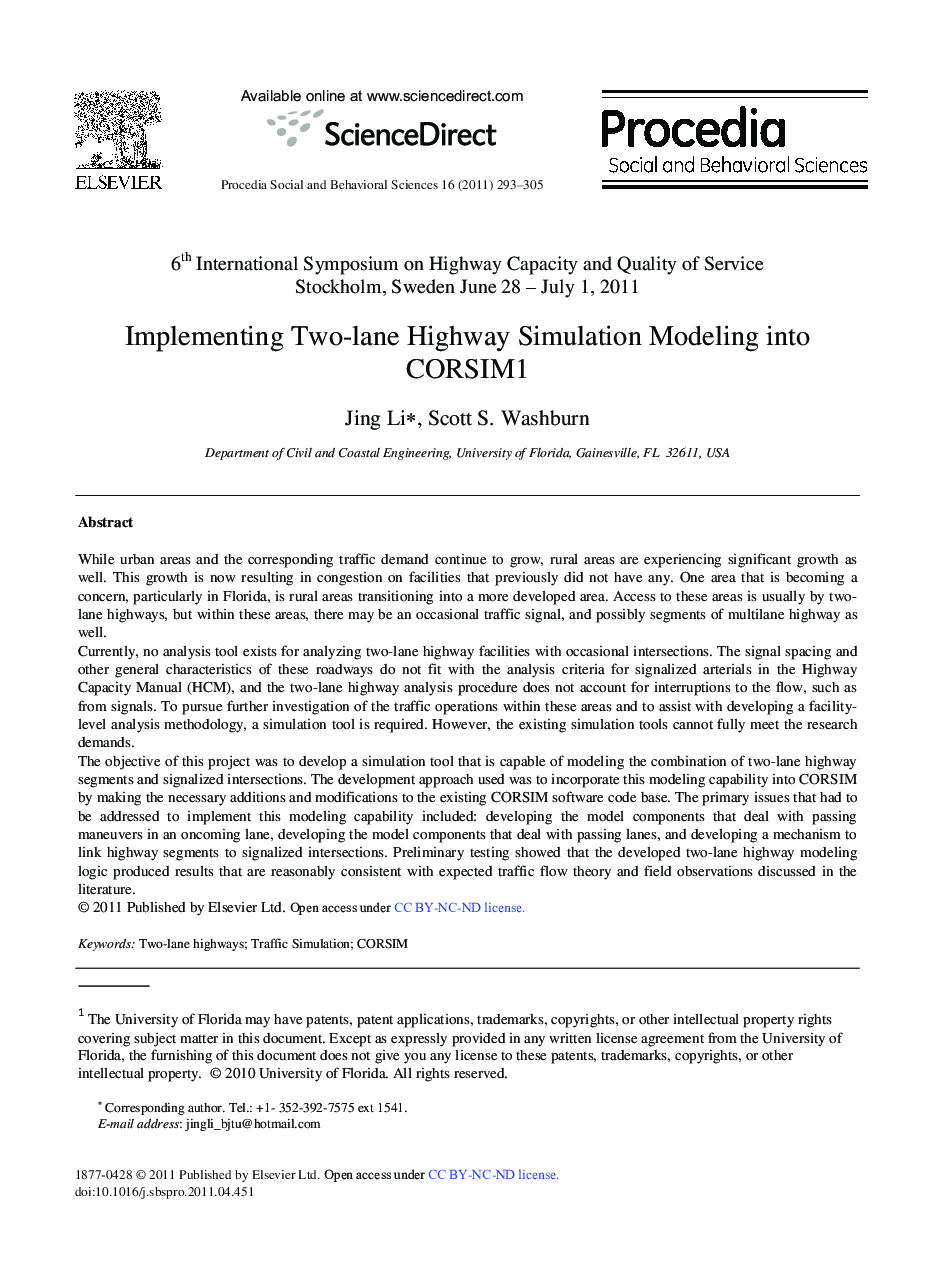| Article ID | Journal | Published Year | Pages | File Type |
|---|---|---|---|---|
| 1124162 | Procedia - Social and Behavioral Sciences | 2011 | 13 Pages |
While urban areas and the corresponding traffic demand continue to grow, rural areas are experiencing significant growth as well. This growth is now resulting in congestion on facilities that previously did not have any. One area that is becoming a concern, particularly in Florida, is rural areas transitioning into a more developed area. Access to these areas is usually by twolane highways, but within these areas, there may be an occasional traffic signal, and possibly segments of multilane highway as well. Currently, no analysis tool exists for analyzing two-lane highway facilities with occasional intersections. The signal spacing and other general characteristics of these roadways do not fit with the analysis criteria for signalized arterials in the Highway Capacity Manual (HCM), and the two-lane highway analysis procedure does not account for interruptions to the flow, such as from signals. To pursue further investigation of the traffic operations within these areas and to assist with developing a facilitylevel analysis methodology, a simulation tool is required. However, the existing simulation tools cannot fully meet the research demands. The objective of this project was to develop a simulation tool that is capable of modeling the combination of two-lane highway segments and signalized intersections. The development approach used was to incorporate this modeling capability into CORSIM by making the necessary additions and modifications to the existing CORSIM software code base. The primary issues that had to be addressed to implement this modeling capability included: developing the model components that deal with passing maneuvers in an oncoming lane, developing the model components that deal with passing lanes, and developing a mechanism to link highway segments to signalized intersections. Preliminary testing showed that the developed two-lane highway modeling logic produced results that are reasonably consistent with expected traffic flow theory and field observations discussed in the literature.
